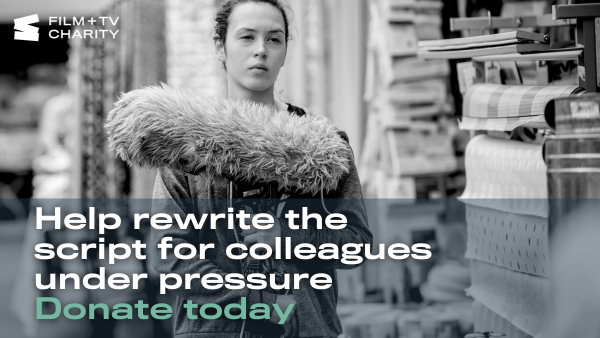One to One: John & Yoko had its international premiere at this month’s BFI London Film Festival. Televisual spoke with the feature documentary’s director Kevin Macdonald for a behind the scenes feature that runs in the latest issue of Televisual, out this week.
The documentary was inspired by the restored and remastered One to One concert, John Lennon’s last ever concert and the only one he gave after leaving the Beatles. The broader narrative of the film covers an 18-month period after the break-up of the Beatles, when John and Yoko moved to New York from England in 1971, culminating in the concert in 1972.
Funding for the documentary came from Mercury Studios, the film division of Universal Music.
Producer Peter Worsley worked with John and Yoko’s son Sean Lennon and the Yoko Ono and Lennon Estate creative director Simon Hilton. They wanted a British director, somebody looking in on American society.
Kevin MacDonald’s previous features include Oscar winning documentary One Day in September and drama The Last King of Scotland, as well as a number of commercials.
“I wanted to do it no matter what,” says MacDonald. A fan of Lennon, he remembers first listening to his music when the former Beatle was killed in 1980, when MacDonald was just 12. “My second thought was, how do you do it in an interesting way? How do you do something that’s different from what’s been done before. And the approach I took was like a magpie.”
The film is constructed from archive footage, pulled together over the course of a year or so, alongside sound tapes, intercut with footage of the concert. There are no interviews.
The only original footage is five or six minutes, in total, of John and Yoko’s reconstructed New York Greenwich Village apartment, where the couple spent hour upon hour watching TV.
It being the only shoot, meant they had a good budget to reconstruct Yoko and John’s home. It’s the first time that Macdonald has worked with his wife, Tatiana MacDonald, an Oscar nominated set designer. They had a clutch of photographs for reference, with a magnifying glass to hand, and lists of the couple’s books and records at that time to check against. “It was more like an installation than a set in a way,” says MacDonald.
“People have asked do they still have the flat,” says MacDonald. “When it was actually shot somewhere in deepest West London, in a little shed, in the depths of winter.”
The 70s TV set is centre stage at the end of a low bed.
MacDonald had visited his grandparents in America in the ‘70s. “I remember surfing through all those channels: horror and comedy and evangelicals and commercials. It was hypnotic and fascinating, And in some way there was a sort of secret code saying this is what America is.
“I wanted to make it feel like they’re not only learning about the world through television, and all the diversity, but they are on television themselves.”
Some way into production, the Lennon Estate got in touch saying that they’d found a box of audio tapes – recordings of phone calls from John and Yoko’s apartment. They didn’t know what was on them, but would they be of use?
Macdonald listened to them on a train down to a holiday weekend in Devon. “It felt like you were in their world in a way I’d never heard before…This is them unguarded, the real them. This is not them giving interviews. It felt like you were eavesdropping and that’s quite exciting.”
In the film, the phone conversations are played out and the words shown in graphics on the screen. “It became as much about something to keep your eyes busy while you’re listening, and something that’s a bit playful,” says Macdonald. They used typewritten cards in other places, inspired by Jonas Mekas, an experimental film maker and friend of John and Yoko.
Archive makes up the majority of the footage and Macdonald gives a “huge” shout out to archive consultants Shanakee. The net was thrown intentionally wide, not just using famous archives, but approaching “people who were not used to licensing material,” says Worsley. Home movies and private collections.
“The archive, whether it be the phone calls or the interviews with John or the home movies,” says Macdonald, “it was all kind of shards of things in that period.” He wanted to reflect that sense of incompleteness in the final film.
They spent 46 weeks in the edit, working at the Assembly Rooms. Sam Rice-Edwards has the credit of editor and co-director. “It was an editor’s film,” says Macdonald. “For the first 25 to 30 weeks, we were still very much trying to find the shape of it.”
Macdonald was guided by his experience of making two Life in a Day documentaries, one from 2011 and the other 2020. Rice-Edwards edited the second. Each of the features is made up of a collage of user-generated clips from around the world, shot in a single day. “I felt like this was really the same thing…an 18-month period focused around this pair of musicians, lovers…There are similar editing approaches, editing for feeling and movement and emotion, more than for what people would generally think of as narrative editing…An almost symphonic kind of sense of a time and a place.”
“The tension, in a way, in the in the edit was, how do we make it feel like it’s almost chaotic,” says Macdonald, “but for there to be enough for you to follow?”
The story follows the couple arriving in the city, Lennon with an open state of mind. He wants to use his voice for positive change, and then we see his realisation that he does not want to support violent protest. There’s a turn to feminism and there’s the narrative of how the concert came about.
“There’s no agenda to the film,” says Macdonald. “It’s just what emerged as being interesting to me.”
A central theme is children. Macdonald hadn’t known that part of the reason for the move to the States was to find Yoko’s child, Kyoko, who was living with her father, they didn’t know where. There’s also reference in the film to John’s childhood and his mother’s death in a traffic accident. There are the sick children in Willowbrook Hospital, the reason for the fund-raising One to One concert. And at the end of the film, Sean Lennon is born.
The audio was designed by Glenn Freemantle at Sound 24, working with re-recording mixer Niv Adiri. Both had collaborated with Macdonald on Life in a Day.
“They bring a feature film, cinematic approach to everything,” says Macdonald. “I think that’s one of the reasons the film really plays well on the big screen.”
The final sound mix, with a complex archive assembly, conform, grade and master were completed at Bleat.
Produced by: Plan B/KM Films & Mercury Studios Production
Director Kevin Macdonald
Producer Peter Worsley
Editor, Co-director: Sam Rice-Edwards
DoP David Katznelson
Producers Kevin Macdonald, Alice Webb
Line producer Melissa Morton Hicks
Associate producer Lizzie Webster
Consulting producer Simon Hilton
Executive producers Steve Condie, David Joseph, Marc Robinson, Brad Pitt , Dede Gardner, Jeremy Kleiner
Sound Design Sound 24
Supervising sound editor/designer Glenn Freemantle Mpse
Re-recording mixer Niv Adiri
Music supervisor, Ross Sellwood
Production designer Kevin Timon Hill
Set decorator, Tatiana Macdonald
Archive production consultancy Shanakee
Supervising archive producer James Mcdonald
Film restoration – Renasci Films, Simon Marbrook
Sound and picture post production Bleat – head of post Dave Turner,
Post producer Marie Valentino
Colourist Lucie Barbier-Dearnley
Vfx Union VFX
Titles and graphics Planning Unit – Jeff Knowles
Offline The Assembly Rooms
Remastered concert audio
Music produced by Sean Ono Lennon
Audio producer, production manager Simon Hilton
Mixed and engineering Paul Hicks, Sam Gannon
Pippa Considine
Share this story

















